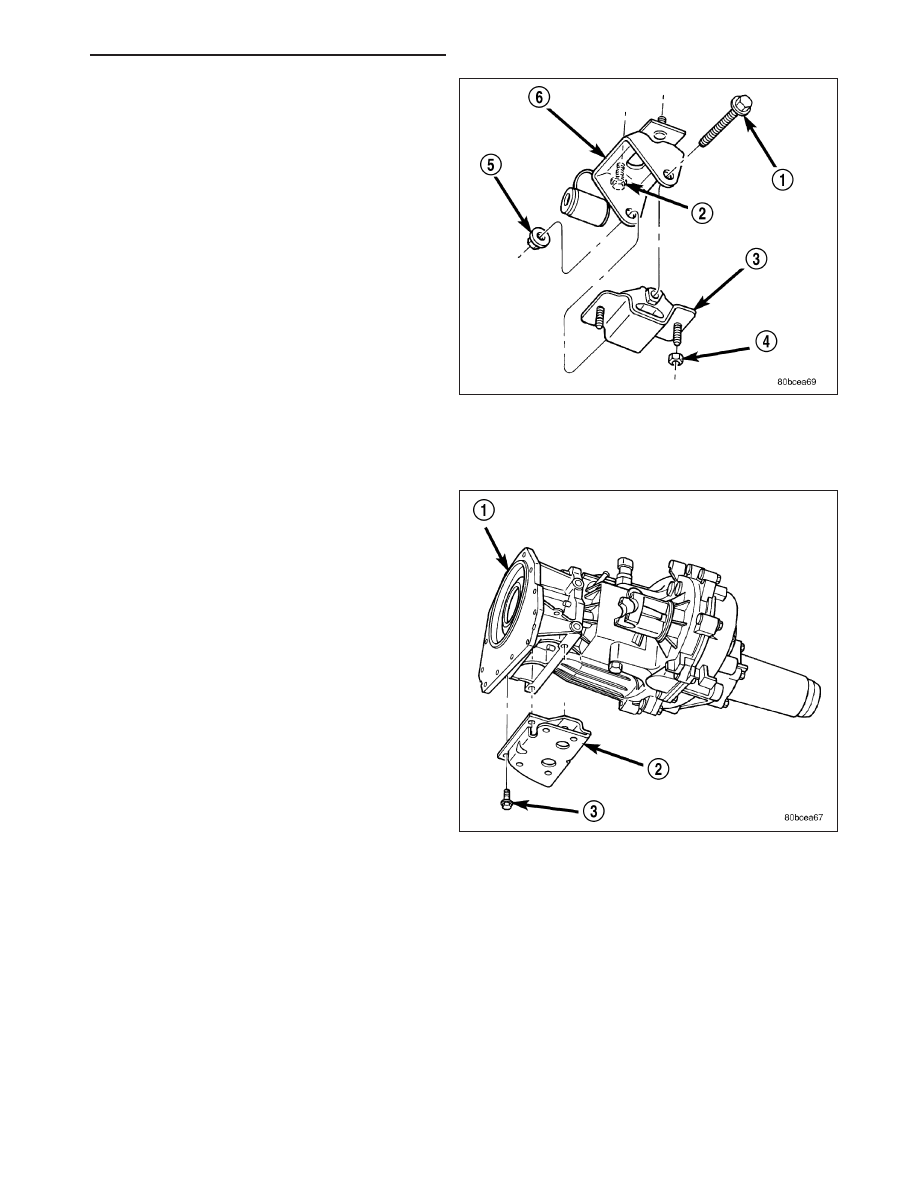Content .. 1069 1070 1071 1072 ..
Dodge Durango (HB). Manual - part 1071

5. Raise the transmission enough to remove the
through bolt (Manual transmission and 4x2 auto-
matic transmission only).
6. Raise the transmission and remove the bolts retaining the mount to the crossmember (4x4 automatic transmis-
sion only).
7. Remove the two nuts retaining the isolator to the
crossmember (Manual transmission and 4x2 auto-
matic transmission only).
8. Remove the bolts (two bolts manual transmission-
)(three bolts 4x2 automatic transmission) retaining
the insulator bracket to the transmission.
INSTALLATION
1. Follow the removal procedure in the reverse order.
2. Tighten the through bolt retaining nut to 101 N·m (75 ft. lbs.).
3. Tighten the isolator bracket to transmission retaining bolts (Manual transmission and 4x2 automatic transmission
only) to 68 N·m (50 ft. lbs.).
4. Tighten the mount bracket to transmission retaining bolts (4x4 automatic transmission only) to 68 N·m (50 ft.
lbs.).
5. Tighten the isolator mount to crossmember retaining nuts (Manual transmission and 4x2 automatic transmission
only) to 41 N·m (30 ft. lbs.).
6. Tighten the mount bracket to crossmember retaining bolts (4x4 automatic transmission only) to 28 N·m (250 in.
lbs.).
HB
ENGINE - 4.7L SERVICE INFORMATION
9 - 1283